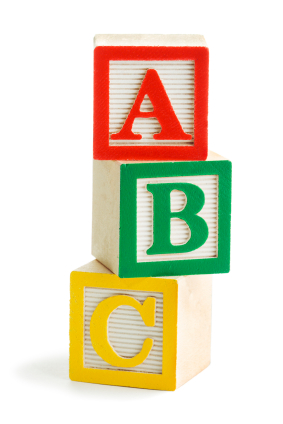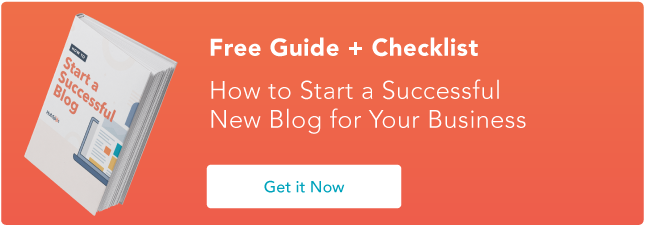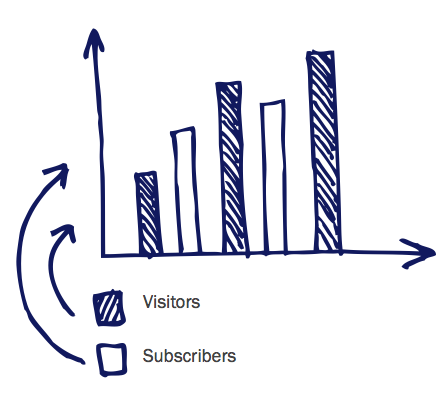A
Alternative text/tag or attribute - This has lots of common names and all mean the same thing. This should be used in HTML as the following  or if using a CMS applied in the field tied to an image for the purpose of describing an image. An alt tag is helpful to both users and search engines should the image not fully render. Alt text is a word of phrase that describes an image on the web.
or if using a CMS applied in the field tied to an image for the purpose of describing an image. An alt tag is helpful to both users and search engines should the image not fully render. Alt text is a word of phrase that describes an image on the web.
Anchor text - Used to anchor a URL to some text on a web page. When users view the web page in a browser, they can click the text to activate the link and visit the page whose URL is in the link. Example: This is anchor text
Article - Article and blog "post" are frequently used synonymously.An article is one single post on a blog.
Author - The name associated with the person who wrote a blog post.
Avatar - No, this is not referring to the 2009 James Cameron film. Though not far removed, an avatar is a photo, graphic or image that represents you across blogs and other social-networking sites. This is not require nor used by all, and is sometimes displayed within the profile or comment sections.
B
Blog - This is short for web log or weblog. Frequently it's a type of website or part of a website. Blogs are usually maintained by an individual or group of people. A personal blog or business blog will traditionally include regular entries of commentary, descriptions of events, or other material such as photos or video.
Note: You should always have a call-to-action to ensure your blog is also generating leads.
Blogger or Blogging - The person who writes for a blog is referred to as a blogger, and the act of writing for the blog is known as blogging.
Note: Google also has a blogging platform called Blogspot and sometimes referred to as "Blogger".
Blogosphere - This refers to the collective community of all blogs and bloggers on the Internet.
Blogroll - Sometimes spelled blog-roll or blog roll, this is a blogger's list of links to other blogs the read or support. Ideally these only include blogs that you really like and recommend.
C
Category - Category and tags are frequently used synonymously. Though often times a category (in terms of hierarchy) is the top level definition and a tag may be a more specific classification beneath that. For example a blog about Apple Pies may have a category of baking and a tag of pies.
CMS or Platform - This is short for content management system. It is a software program that allows you to add content to a website more easily. HubSpot for instance has a CMS through which you can manage your website pages, landing pages and blog.
Comments - The opinions of your readers left in response to a blog post. This is a useful way for you to connect with your audience. It's recommended to freely give users access to and make it easier for them to connect, which usually means not monitoring comments for approval and only deleting truly offensive comments. If negative comments come up use this as an opportunity to proactively share your knowledge and respond back positively.
CSS or Stylesheet - This is short for Cascading Style Sheets. Written in HTML this is commonly used to style web pages. Styling options including page layouts, colors and fonts are typically preset to help control cohesiveness and an overall professional look and feel for your website and/or blog.
D
Directory - A blog directory is a website that lists blogs, usually ranking them by their popularity and ordering them by subject or category. It's a good idea to add your blog to directories to help generate more relevant traffic, especially when you are first getting started.
F
Favicon - This is the small graphic, typically your logo or other representation your website that appears in a browser's address bar, favorites or bookmark lists. In HTML it is referenced as the following rel="shortcut icon", and should be saved or uploaded as favicon.ico. The final product looks something like this:
Feed - This is a news feed used for providing users with frequently updated content. Content distributors syndicate a web feed, thereby allowing users to subscribe to it in RSS reader or via e-mail.
H
Header - This is the top part of your blog, appearing before any pages or posts. Headers generally include items such as logos, taglines, and navigation menus, which are meant to set the tone or theme of your blog.
Hyperlink - Used synonymously with the word "link", this is clickable content within a web page that takes the user to another page, website, or within part of the same page. The text that comprises the hyperlink is referred to as the "anchor text".
HTML - This is short for Hypertext Markup Language, the language used to write web pages. Most HTML elements are written with a start tag  and an end tag
and an end tag  , with content in between. It follows a tree like structure where common elements include
, with content in between. It follows a tree like structure where common elements include 
I
Index(ed) - The process by which search engines find your content and then make it available to users by storing it and displaying it in search results. To know whether or not your content has been indexed simply do a search for a page and if a search engine returns your page then it has indeed been indexed.
K
Keyword(s) or Keyphrase(s) - These should be used as a topic generator. Picking keywords is the process of determining what topics are most relevant to your target audience or buyer persona and crafting content around those topics. They should be used in a strictly creative sense for structural composition, reasoning, and comprehension, and should showcase your knowledge in a given field.
M
Meta Description - Your description should be a short description of that particular page or post. It's a great opportunity to place some very targeted content for your audience to see on the search results page. A good description is approximately 2 sentences (no more than 150 characters) using your target keywords, phrased to cause a person to want to visit your site.
Meta Keywords - These have historically been the most popular and well known element describing content of a web page. Search engines, however, quickly came to realize that this piece of information was often inaccurate or misleading and frequently lead to spammy sites. As such this tag is no longer followed by search engines.
Meta Tags - A comprehensive term that is comprised of meta titles, descriptions and keywords. These three items together are what are referred to as meta tags. The tags are elements that provide information about a given web page, most often to help search engines categorize them correctly.
Note: These are inserted into the HTML and as such not directly visible to a user visiting the site.
Meta Title or Page Title - The Page Title is the phrase that shows in the blue bar at the top of your web browser when the page loads. The page title is also the bold text that shows up on a search results page when you rank in a search engine.
N
Nofollow - A link attribute which prevents links from being crawled by search engines. As a result no SEO credit gets passed from one page to another.
P
Permalink - An address or URL of a particular post within a blog.
Post - As stated above, this is synonymous with article. Basically a post is an article within a blog. A post can be on any topic, and it's the collection of posts that form the basis of a blog.
R
Redirect - Used to specify an alternative URL and in order to redirect the user (or search engine) to a different location. The most commonly used redirect is a 301 permanent redirect, which is applied when you change the URL of a page. To ensure that people, who have linked to or bookmarked that old page/URL, can still get to the updated page/URL.
Robots - Commonly filed as robots.txt, which provides information about a given Web page, most often to help search engines categorize them correctly.
RSS - Short for Really Simple Syndication, a means by which users can subscribe to a feed, a blog feed for instance. Because content is published in a frequent basis subscribing makes it easier for users to follow content and updates.
S
Sitemap - A public directory or index of sorts to help users easily access pages of your website. Basically this is a page on your site where you tell users about key pages of your website by listing them in almost an outline format and then linking to those internal pages. This makes your content easier to find by users including search engines.
Social Media Sharing - Your content should not exist in a vacuum. Give people the opportunity to share your content for you. A lot of platforms have this built in or at least available as an add-on. There are also tools like sharethis.com or addthis.com that make content sharing easy.
Subscribe - Your blog should have multiple means through which users can subscribe to your blog content. These should include email and RSS.
T
Tag or Tagging - A tag is a bit like a category in that it is another way of classifying blog post. It is a word or set of words that help define what the post is about.
Tip: Think of it like a filing system and these are your folder labels.
Title or Subject - The title of your page is frequently an H1 tag.
U
URL - This is short for Uniform Resource Locator ... say what? Basically this is the address of a piece of information that can be found on the web such as a page, image or document.
W
Widget or Module - Areas of your website that are uniquely designed to stand out and commonly found in the side bars of your website (left or hand side of a page). Within a CMS these are easily interchangeable sections that often provide links, call to actions or other helpful resources.
X
.XML Sitemap - A file you can use to publish lists of links from across your site. This is easily generated and there a lots of free tools out there to help you generate this sort of file. Sitemaps do not guarantee all links will be crawled, and being crawled does not guarantee indexing. However, a Sitemap is still the best insurance for getting a search engine to learn about your entire site.
Blog Optimization










![5 Ideas for Creating Killer Evergreen Content [+ Examples]](https://53.fs1.hubspotusercontent-na1.net/hubfs/53/Evergreen-content.jpg)

